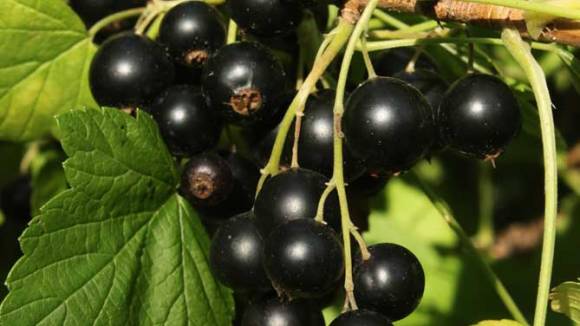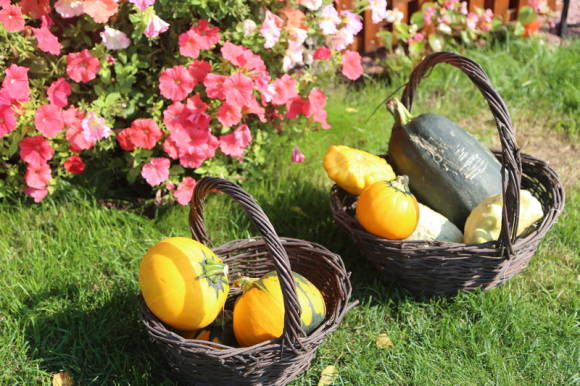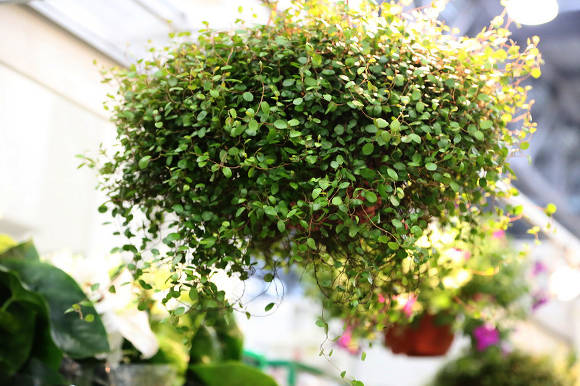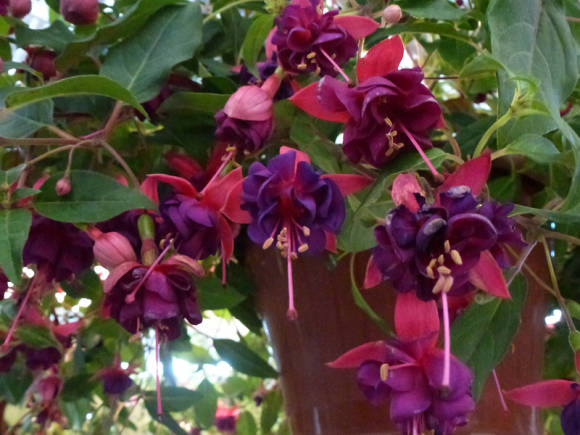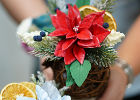
Cultivation of blue honeysuckle does not cause much trouble: agricultural technology, although it has its own characteristics, is in many ways similar to traditional berry crops. Shaded, too dry and low flooded areas are not suitable for this crop. Since blue honeysuckle is a cross-pollinated plant, at least 3-5 varieties must be planted in one area. You can place the bushes, moving away from each other by 1.5 m, in the form of a hedge along the edge of the site. For fruiting bushes, an autumn planting is desirable, since in spring flowering can begin before the soil has completely thawed.

When pruning blue honeysuckle, it is not recommended to cut off the tops of the shoots, since the maximum number of buds with flower rudiments is concentrated on them, which will lead to a decrease in yield. Bushes over 6-7 years of age require sanitary pruning - removal of diseased, broken off, dried branches. Thinning and rejuvenation of the crown in aging bushes with small dried branches is carried out in the fall, after leaf fall, or in early spring, in March-April. The aging part of the crown is cut off 30-50 cm above the origin of a large stem growth. For fundamental rejuvenation of the honeysuckle bush, strong pruning "on a stump" is possible, at a height of 0.5 m from the soil level.
Blue honeysuckle is negatively affected by abundant mineral fertilization: from an excess of nitrogen fertilizer, serial (spare) buds open, additional shoots appear, which leads to a strong thickening of the shrub and weakening of fruiting. It is not recommended to carry out active loosening directly under the bush, because the bush has a superficial root system. Mulching the soil under the bush is a way out for care without injuries of the berry bush. In drought, blue honeysuckle must be watered so that the edible fruits do not become more bitter and remain large and juicy.
On average, 1.5-2 kg are harvested from a honeysuckle bush, rarely 3 kg of fruits. Only on a high agricultural background, the most productive varieties give 5-7 kg of fruit. The fruits ripen at different times, so they are harvested in 2-3 doses. They can crumble, which leads to the loss of part of the crop. During the ripening period of the crop, birds, especially fieldbirds and sparrows, willingly peck ripe honeysuckle fruits.
Reproduction

Blue honeysuckle takes root easily green cuttings, while maintaining varietal characteristics. When cutting green cuttings, the degree of maturity of the shoots can be determined as follows: when bent, they do not bend, but break with a characteristic crunch. The time for cutting green cuttings coincides with the end of flowering and the appearance of the first green fruits: in Central Russia - in May. Cuttings are cut from the middle part of the shoot, preferably with two or three nodes. The upper cut of the cutting is done horizontally, 1-1.5 cm away from the buds, and the lower cut is usually oblique, the angle of inclination is 45 °. Leaf blades from the lower nodes are completely cut off, and from the upper nodes they are truncated by more than half.
Single-node short cuttings (3-5 cm long) take root by 60%; traditional cuttings with 2-3 leaf nodes (7-13 cm long) root better, 70-95%. Good results of rooting the tops of shoots, as well as cuttings "with a heel" are obtained when breaking off the lower part of the shoot from a perennial shoot. If cuttings are harvested earlier - during the period of active growth, then the rooting rate is lower - 45-60%. Unripe shoots rot due to high humidity.

Honeysuckle is capable of rooting without the use of growth stimulants, but after the use of heteroauxin, indolylbutyric acid (IMA), indoleacetic acid (IAA), Fiton or Kornevin, the yield of developed plants increases.
A soil mixture is suitable for rooting cuttings: peat and sand (in a ratio of 1: 3). The cuttings are planted obliquely at an angle of 45 °, placing them according to a 7x5 cm pattern.A prerequisite for rooting cuttings is a high humidity of the substrate and air (up to 85%) at a temperature of 20-250C. Rooted cuttings are best grown at the rooting site until the time of planting in a permanent place in the garden, that is, within 1-2 years. If the rooting of cuttings was carried out in a film greenhouse, then in September the film is removed, and the cuttings are left for the winter without transplanting, covered with spruce branches. So that the cuttings do not die in the winter from bulging, they do not need to be transplanted into the ground in the fall. In the second year of life, the plants give stronger growth and branch. By autumn, their height reaches 25-35 cm. Strong seedlings can be planted in a permanent place in the garden, and weak ones can still be grown during one growing season. By the age of three, individual plants begin flowering and fruiting.
If we organize the cultivation of honeysuckle seedlings in peat pots, then it will be possible to transport and sell this berry bush at any time, regardless of the season. Already in the winter months, it will be necessary to start preparing the substrate for the pots, and in March-April in greenhouses, it is possible to transplant seedlings or seedlings into them.
Seeds blue honeysuckle is propagated mainly for breeding purposes, because it is impossible to accurately predict the yield and taste of the fruits of the resulting seedling. With industrial propagation, a good cleaned state of seeds is obtained by pressing juicy ripe fruits in a gauze or nylon bag. You can grind the fruits in a sieve, and then rinse thoroughly with water. When the seeds are placed in a container of water, where they settle to the bottom, the pulp particles float up and are removed. After drying in the shade, clean seeds are laid out in sachets. In amateur gardening, it is enough to crush the fruit on thin (preferably blotting) paper, then dry it and keep the seeds like that until the day of sowing.
Freshly harvested seeds have a short dormancy period and do not need pre-sowing treatment with low temperatures (stratification). If the seeds are stored for more than a year, then stratification is required: the seeds are kept for a month at a temperature of 0-4 ° in wet sand or sawdust.
Due to the small size of the seeds and frosty bulging, sowing in the ground on the ridges is best replaced by sowing in wooden boxes or flower pots. You can use film or glass greenhouses with artificial heating for sowing honeysuckle. Seeds need light fertile soil, consisting of equal parts of humus, peat and river sand. When sowing, the seeds are buried by 0.5-0.7 cm. The upper layer of the substrate is covered with a layer of sand by 1 cm.
Spring sowing of blue honeysuckle seeds in a greenhouse or in a greenhouse is reliable. In March-April, wooden boxes with an earthen mixture were prepared and sown with freshly harvested seeds. A good result was obtained when the seeds were soaked in water before sowing. For successful germination, the indoor temperature was maintained at 20-24 ° and the soil was regularly moistened. Seedlings appeared in 30-35 days. In May, seedlings dive into ridges at a distance of 5 cm from each other and watered carefully. In the first days after planting, the seedlings must be shaded.
